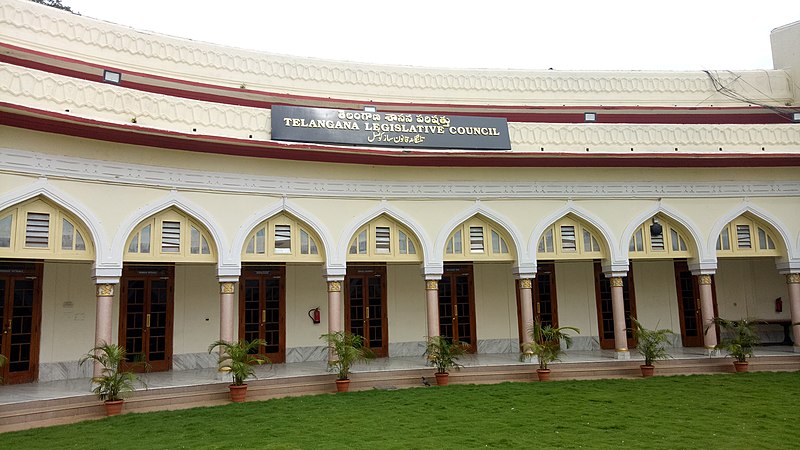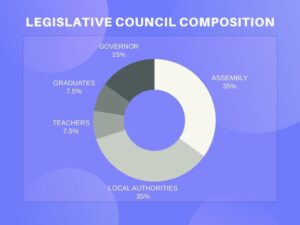Graduates' constituencies are yet to update the voter eligibility criteria even after 18 years, and the formation of the state.
Published Aug 16, 2024 | 8:30 PM ⚊ Updated Aug 16, 2024 | 8:30 PM

As the Legislative Council elections draw nearer, some old problems remain unadressed
Telangana is expected to hold its local body elections by this year-end. With political parties ramping up their grassroots-level base, the run-up to the Legislative Council elections is bound to be eventful.
However, the state has yet to modify the eligibility criteria for graduates to vote in the Legislative Council elections. It still follows the criteria set 18 years ago.
The Indian Constitution describes the composition of the Legislative Council under Article 171 of Part VI. The Legislative Council can have no more than one-third of the strength of the Legislative Assembly. However, the Legislative Council should have at least 40 members.
Article 23 (1) of the Andhra Pradesh Reorganisation Act (2014), determined that the Telangana Legislative Council will have 40 members.
Article 171 (3) of the Indian Constitution specifies the makeup of the Council. It mandates that the MLAs and local authorities elect one-third of the council members each. Additionally, it directs graduates and teachers to elect one-twelfth of the members each. The governor nominates the remaining members.

Article 171 of the Indian Constitution specifies the makeup of the Legislative Council.
In Telangana, the legislators and local authorities elect 14 councillors each, of which the teachers and graduates decide three each and the governor nominates six councillors.
As per Article 171 (4), the councillors elected by local authorities, graduates, and teachers will contest from territorial constituencies. Meanwhile, the legislators will elect councillors through a single transferrable vote, following the proportional representation system.
Article 171 (5) further elaborates that the governor shall nominate the councillors considering their knowledge in specific areas or practical experience.
The Teacher’s and Graduates’ Constituencies are six territorial segments where only teachers or degree holders can vote.
Both sets of constituencies share the same three territorial areas of Nalgonda-Khammam- Warangal, Mahbubnagar-Hyderabad-Ranga Reddy, and Nizamabad-Adilabad-Medak-Karimnagar.
To become eligible to vote in the Teachers’ Constituencies, the individual must be a teacher and should have at least three years of teaching experience in the six years preceding the election.
In September 2006, GO Ms No 537 issued by the erstwhile Andhra Pradesh government listed the teachers’ eligibility to vote. The GO covered 23 institution types, whose teachers can vote.
In November 2006, two months after the first list, GO Ms No 644 added two other institutions whose teachers, too, could vote.
Article 171 (3) also specifies that the teacher should teach at an institution not lower than the secondary school level.
In February 2017, over a decade after the first list, GO Ms No 49, issued by the Telangana state, identified 30 categories of institutions higher than the secondary school level. This new list became the basis for deciding the eligibility of Teachers’ Constituencies.
However, Graduates’ constituencies are yet to update the voter eligibility criteria even after 18 years. GO Ms No 536, issued in 2006 by erstwhile Andhra Pradesh, still decides the eligibility. It was used to assess voter eligibility in the constituencies as recently as 2023.
It listed 54 Arts and Sciences degrees from specific, recognised universities. Additionally, it lists 43 degrees from specific institutions for Engineering and Technology. Similarly, it identified 47 medical education institutions and 10 dental colleges.
Additionally, those holding degrees in agricultural sciences from 22 institutions can also vote. Even membership in the Institute of Charter Accountants of India can grant one the eligibility to vote.
Interestingly it also recognises specific degrees from about 16 countries, but the voter should be an Indian national.
One of the major arguments for revamping the criteria for voter eligibility in the Teachers’ Constituencies was the bifurcation. Following the 2014 bifurcation, both Andhra Pradesh and Telangana followed the same criteria.
In 2017, noting that the provisions from the Andhra Pradesh Reorganisation Act were valid only till 2 June 2024, the Telangana state established localised criteria. However, the voter eligibility for Graduates’ Constituencies remains unchanged.
Provided that the 2006 criteria are long and exhaustive, it does not account for newer institutions or degrees, and hence it calls for updating the criteria.
(Edited by Majnu Babu)
(South First is now on WhatsApp and Telegram)
